10000 Results
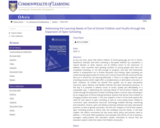
At any one time, about 300 million children of school going age are not in school. Experience indicates that when schooling is disrupted, whether by a pandemic, a natural disaster or other reasons, not all children return to the classroom. In addition, most countries have growing numbers of young people who have not completed schooling, or not well enough to progress, and who find themselves neither in employment nor in further education and training.
Open schooling can create learning opportunities for those not in school, those who left school and those who are in school but not learning effectively. There is no single model for open schooling provision which might offer a complementary or alternative curriculum, or both. However, all models can benefit from greater use of open educational resources; open, distance and flexible methods and open educational practices. In this way it is possible to address issues of access, quality and affordability in a sustainable way.
This book offers guidelines and examples that will be of use to teachers, managers, policy-makers and education leaders interested to ensure that the education system meets the needs of all children and youths.
- Subject:
- Education
- Material Type:
- Reading
- Textbook
- Provider:
- Commonwealth of Learning
- Author:
- Anshul Kharbanda
- Chanchal Kr. Singh
- Charity Mbolela Bwalya
- Dean Dundas
- Edwig Karipi
- Ephraim Mhlanga
- Heroldt Veekama Murangi
- Jan Nitschke
- Kirston Brindley
- Mike Hollings
- Rajiv Kumar Singh
- Sadia Afroze Sultana
- Sandhya Kumar
- Sheldon Samuels
- Som Naidu
- Sukanta K. Mahapatra
- Tommie Hamaluba
- Tony Mays
- Wilhelmina Louw
- Yousra Banoor Rajabalee
- Date Added:
- 06/02/2021

Poster showing a woman attaching a triangle to complete a five-pointed star "Victory." Woman's Committee, Liberty Loan Organization, Seventh Federal Reserve District. W.L.L.C. X5.
- Subject:
- History
- U.S. History
- Material Type:
- Diagram/Illustration
- Primary Source
- Provider:
- Library of Congress
- Provider Set:
- Library of Congress - World War I Posters
- Date Added:
- 06/18/2013
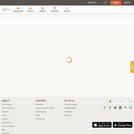
This course features a video review of addition up to the sum of ten for first graders.
- Subject:
- Mathematics
- Numbers and Operations
- Material Type:
- Lecture
- Provider:
- CK-12 Foundation
- Provider Set:
- CK-12 Elementary Math
- Date Added:
- 02/25/2015
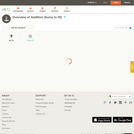
This short video and interactive assessment activity is designed to teach second graders an overview of addition (sums to 10).
- Subject:
- Mathematics
- Numbers and Operations
- Material Type:
- Assessment
- Interactive
- Lecture
- Provider:
- CK-12 Foundation
- Provider Set:
- CK-12 Elementary Math
- Date Added:
- 03/04/2015
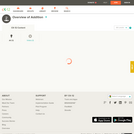
This short video and interactive assessment activity is designed to teach second graders an overview of addition.
- Subject:
- Mathematics
- Numbers and Operations
- Material Type:
- Assessment
- Interactive
- Lecture
- Provider:
- CK-12 Foundation
- Provider Set:
- CK-12 Elementary Math
- Date Added:
- 03/04/2015

Add your particular expertise to the wider community
- Subject:
- Applied Science
- Computer Science
- Material Type:
- Assessment
- Date Added:
- 11/04/2018

This is a presentation on Non verbal communication
1-What is communication?
2. What is Verbal and Non-verbal Communication?
3. Non-verbal Communication examples
4. Your body language may shape who you are
- Subject:
- Education
- Language Education (ESL)
- Material Type:
- Lesson Plan
- Author:
- Adel Mohamed Badawy Dardir
- Date Added:
- 09/20/2022
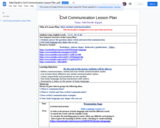
1-Students answer the questions about verbal and nonverbal communication.
2-Our body language may shape who we are.
By the end of this lesson, students will be able to:
• Define communication, verbal and non-verbal communication styles
• List at least three different non-verbal communication styles.
• Listen respectfully and positively to one another
• Use body language during interactions with others.
• Summarize a video on the power of body language.
- Subject:
- Education
- Language Education (ESL)
- Material Type:
- Lesson Plan
- Author:
- Adel Mohamed Badawy Dardir
- Date Added:
- 09/20/2022

Adelina Otero-Warren, the first Hispanic woman to run for U.S. Congress and the first female superintendent of public schools in Santa Fe, was a leader in New Mexico’s woman’s suffrage movement.
This resource is from a collection of biographies of famous women. It is provided by the National Women's History Museum, and may include links to supplemental materials including lesson plans about the subject and related topics, links to related biographies, and "works cited" pages. The biographies are sponsored by Susan D. Whiting.
- Subject:
- Gender and Sexuality Studies
- History
- Social Science
- Material Type:
- Reading
- Provider:
- National Women's History Museum
- Provider Set:
- Biographies
- Author:
- National Women's History Museum
- Date Added:
- 03/01/2023

Civil Communication Lesson Plan Organizer
Name: Adel Dardir
Lesson Plan in weeks
- Subject:
- Education
- Language Education (ESL)
- Material Type:
- Lesson Plan
- Author:
- Adel Mohamed Badawy Dardir
- Date Added:
- 09/20/2022

El objeto de aprendizaje Quizizz va dirigido a los estudiantes que cursan el primer grado de educación primaria que se encuentran en una edad entre 6 y 7 años de edad. Basado en el conteo y serie de diez en diez del tema de las decenas..
- Subject:
- Education
- Material Type:
- Assessment
- Author:
- Javier Cuevas
- Date Added:
- 04/24/2021
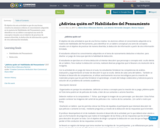
El objetivo de esta actividad es que de una forma creativa los alumnos utilicen el conocimiento adquirido en la materia de Habilidades del Pensamiento, para identificar en un tablero conceptual una serie de conceptos visuales con el objetivo de practicar de manera divertida, la deducción de información a partir de otra información brindada.
- Subject:
- Arts and Humanities
- Material Type:
- Game
- Date Added:
- 10/04/2017
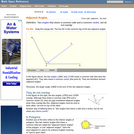
An interactive applet and associated web page that show the concept of adjacent angles (two angles that share a common leg). The applet shows three line segments with a common endpoint. The user can move the center one and see that the angles on both sides (the adjacent angles) of it are affected. Applet can be enlarged to full screen size for use with a classroom projector. After use in the classroom, students can access it again from any web browser at home or in the library with no login required. This resource is a component of the Math Open Reference Interactive Geometry textbook project at http://www.mathopenref.com.
- Subject:
- Geometry
- Mathematics
- Material Type:
- Reading
- Simulation
- Provider:
- Math Open Reference
- Author:
- John Page
- Date Added:
- 02/16/2011
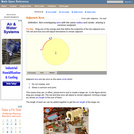
An interactive applet and associated web page that demonstrate the the concept of adjacent arcs. The user can 3 drag points around a circle that define the endpoints of two adjacent arcs. Web page has the properties of adjacent arcs. Applet can be enlarged to full screen size for use with a classroom projector. This resource is a component of the Math Open Reference Interactive Geometry textbook project at http://www.mathopenref.com.
- Subject:
- Geometry
- Mathematics
- Material Type:
- Reading
- Simulation
- Provider:
- Math Open Reference
- Author:
- John Page
- Date Added:
- 02/16/2011
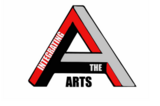
This resource was created by Maelynn Liewer, in collaboration with Dawn DeTurk, Hannah Blomstedt, and Julie Albrecht, as part of ESU2's Integrating the Arts project. This project is a four year initiative focused on integrating arts into the core curriculum through teacher education, practice, and coaching.
- Subject:
- English Language Arts
- Visual Arts
- Material Type:
- Lesson Plan
- Author:
- Arts ESU2
- Date Added:
- 08/21/2022
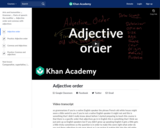
Learn about the adjective order of Standard American English and your new favorite memory aid: DOSA-SCOMP.
- Subject:
- English Language Arts
- Language, Grammar and Vocabulary
- Material Type:
- Lesson
- Provider:
- Khan Academy
- Provider Set:
- Khan Academy
- Author:
- David Rheinstrom
- Date Added:
- 07/29/2021
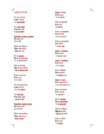
This resource will help you to pronounce correctly the sentences that are in the English language and to memorize the adjectives that are in red.

This resource will help you to pronounce correctly the sentences that are in the English language and to memorize the adjectives that are in red.

This is a great lesson to use with pre-intermediate students. Though parts of it can be used with beginner students and as a review for more advanced students. The point of this lesson is to give students the ability to differentiate between similar-looking adjectives in English. When teaching adjectives ending in –ed and –ing you will cover words like boring and bored which tend to confuse new speakers. So if you find that one of your students is struggling with adjectives this is the right lesson to teach.If you want additional lesson plans and support, including teachers’ notes, be sure to register for a free Off2Class account.
- Subject:
- Language Education (ESL)
- Language, Grammar and Vocabulary
- Material Type:
- Lesson Plan
- Student Guide
- Teaching/Learning Strategy
- Author:
- Regan McNeill
- Date Added:
- 02/23/2022
